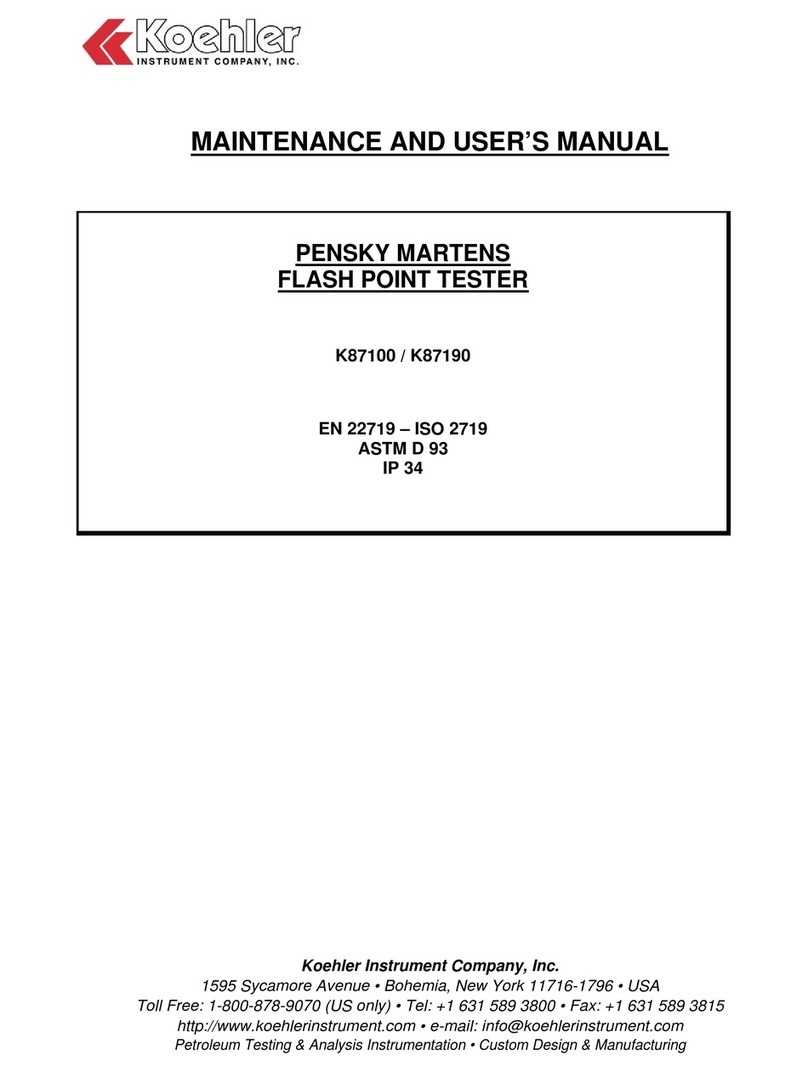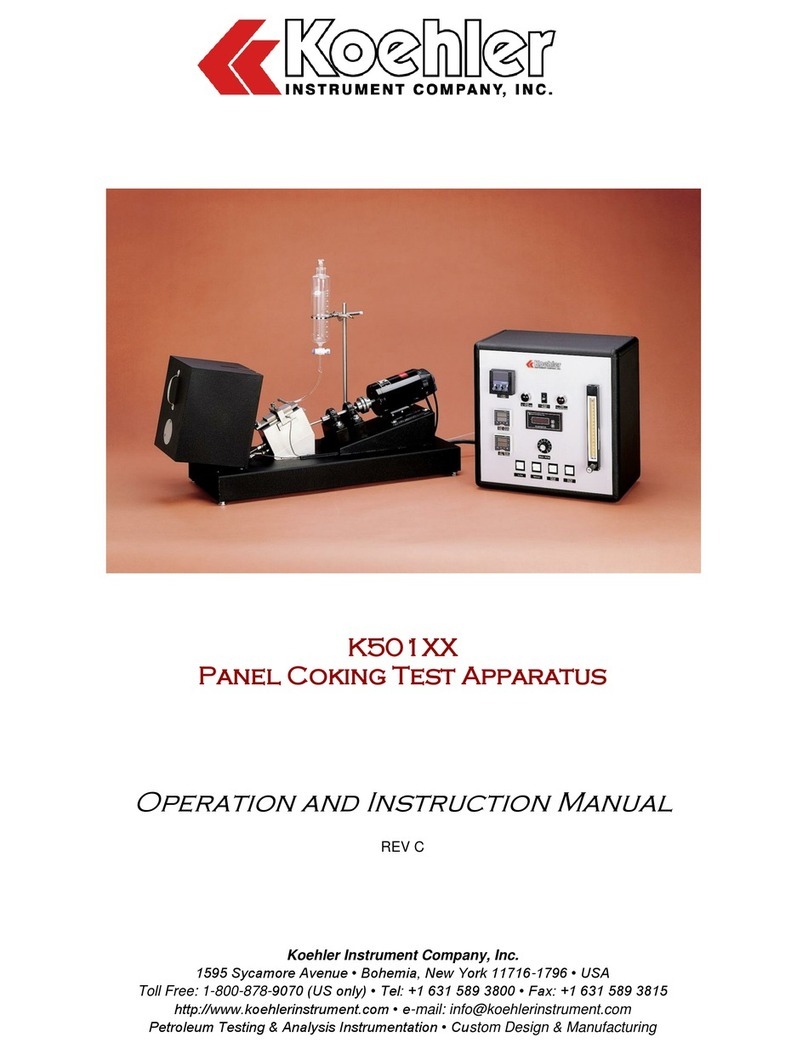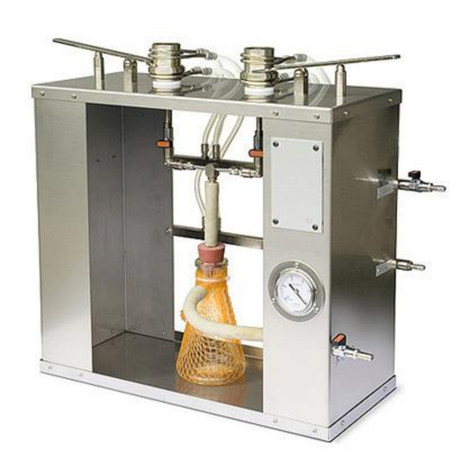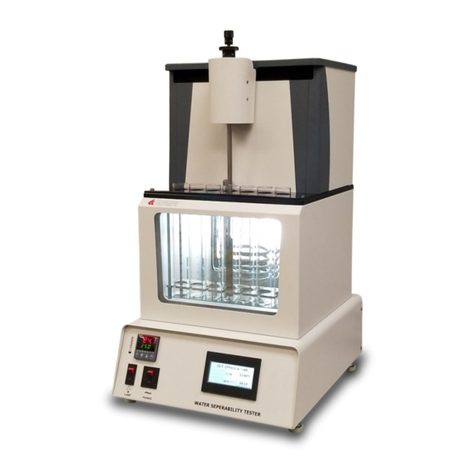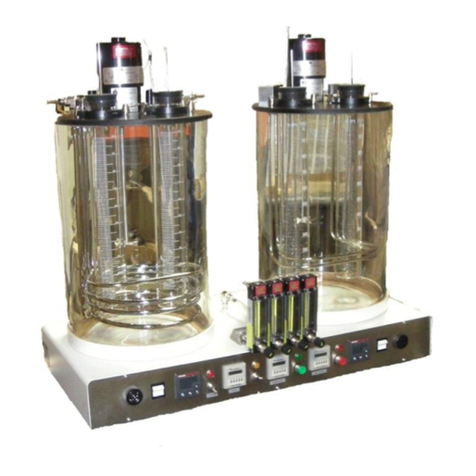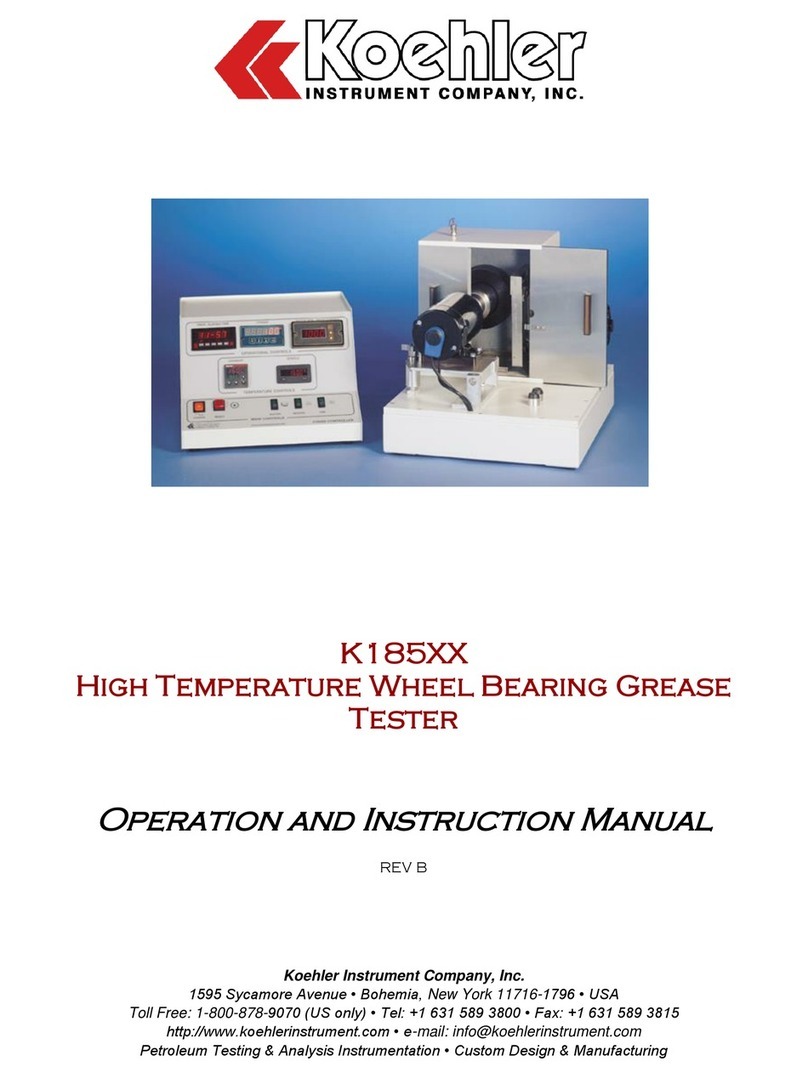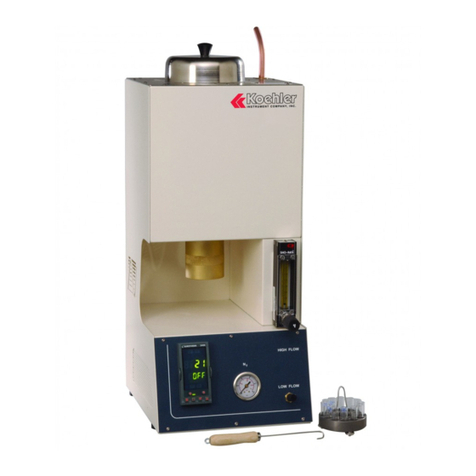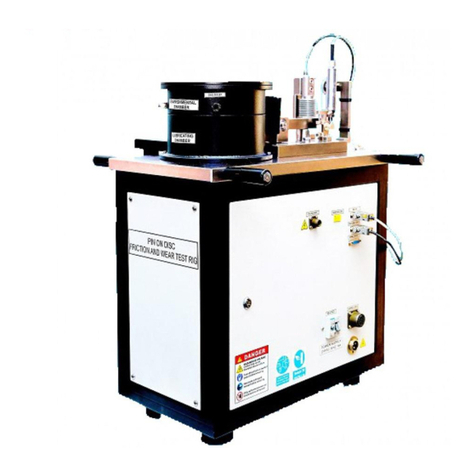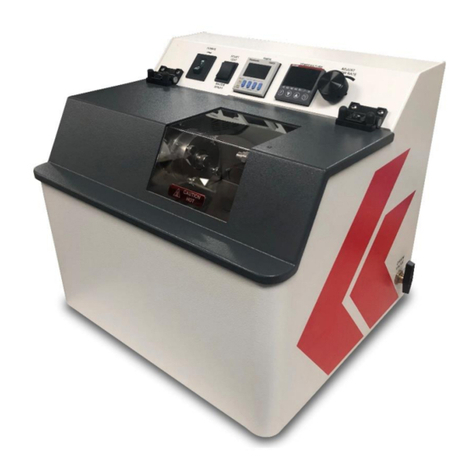
K13992 Cleveland Open Cup Flash Point Tester
Operation and Instruction Manual
K13992-Manual -6-
1 Introduction
The Koehler K13992 Cleveland Open Cup Flash
Point Tester is the latest design for accurately
determining flash and fire point temperatures of
viscous petroleum products over an extended
temperature range according to the ASTM D92
test method and related test specifications.
This manual provides important information
regarding safety, technical reference, installation
requirements, operating condition specifications,
user facility resource requirements, and operating
instructions for the Cleveland Open Cup Flash
Point Tester. This manual should also be used in
conjunction with applicable published laboratory
procedures. Information on these procedures is
given in section 1.2.
1.1 Koehler's Commitment to Our
Customers
Providing quality testing instrumentation and
technical support services for research and testing
laboratories has been our specialty for more than
50 years. At Koehler, the primary focus of our
business is providing you with the full support of
your laboratory testing needs. Our products are
backed by our staff of technically knowledgeable,
trained specialists who are experienced in both
petroleum products testing and instrument service
to better understand your requirements and
provide you with the best solutions. You can
depend on Koehler for a full range of accurate and
reliable instrumentation as well as support for your
laboratory testing programs. Please do not
hesitate to contact us at any time with your
inquiries about equipment, tests, or technical
support.
Toll Free: 1-800-878-9070 (US only)
Tel: +1 631 589 3800
Fax: +1 631 589 3815
Email: info@koehlerinstrument.com
http://www.koehlerinstrument.com
1.2 Recommended Resources and
Publications
1. American Society for Testing and Materials
(ASTM)
100 Barr Harbor Drive
West Conshohocken, Pennsylvania 19428-
2959, USA
Tel: +1 610 832 9500
Fax: +1 610 832 9555
http://www.astm.org
email: service@astm.org
ASTM Publication:
ASTM D92: Standard Test Method for Flash
and Fire Points by Cleveland Open Cup
Tester
ASTM D6074: Standard Guide for
Characterizing Hydrocarbon Lubricant Base
Oils
ASTM D6158: Standard Specification for
Mineral Hydraulic Oils
2. International Organization for Standardization
(ISO)
1, rue de Varembé
Case postale 56
CH-1211 Geneva 20, Switzerland
Tel: 41 22 749 01 11
Fax: 41 22 733 34 30
http://www.iso.org
ISO Publication:
ISO 2592: Determination of Flash and Fire
Points- Cleveland Open Cup Method
3. American Association of State Highway and
Transport Officials (AASHTO)
444 North Capital Street N.W., Suite 249
Washington, D.C. 20001
Tel: (202) 624-5800
Fax: (202) 624-5806
E-mail: info@aashto.org
AASHTO Publication:
AASHTO T48: Flash and Fire Points by
Cleveland Open Cup
4. Energy Institute (IP)
61 New Cavendish Street
London, WIM 8AR, United Kingdom
Tel: 44 (0)20 7467 7100
Fax: 44 (0)20 7255 1472
http://www.energyinstpubs.org.uk/












